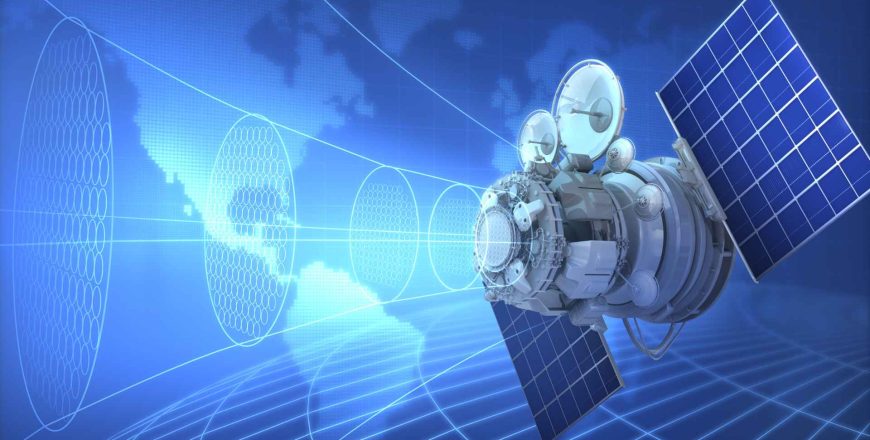Satellite and Terrestrial Monitoring and Measurements

Course Overview
This is an advanced course that delves into the principles of satellite communications, measurement techniques, and the crucial aspects of managing the frequency spectrum. This comprehensive program aims to equip participants with the knowledge and skills required for satellite monitoring and measurements so that they may excel in the domain of satellite regulations, frequency planning, spectrum management, and coordination services.
Practical monitoring and measurement techniques will be taught, equipping participants with the skills to analyze signal quality, data throughput, and troubleshoot common issues in satellite communication links. The course will also cover the regulatory requirements and industry standards for satellite spectrum monitoring.
Target Audience
- Mobile Network Operators
- Telecom Regulators dealing with frequency allocation and coordination
- Telecommunications companies (PTTs, Carriers)
- Satellite Operators
Duration & Training Format
- Classroom: 5 days
- LIVE Virtual*: 35 hours
- A minimum of 6 or more participants are required to commence a company-based LIVE Virtual course
- LIVE Virtual courses can be conducted for 5 hours or 7 hours daily. Please note that the number of training days will be extended if you opt for 5 hours daily.
Upcoming Course Dates
10 – 14 Mar 2025 (Mon – Fri), GMT +08:00
If you are keen on attending this course, please register your interest via our course enquiry form.
Course Objectives
At the end of the course, participants will be able to:
- Demonstrate a solid understanding of the fundamentals principles of satellite communications, Earth Stations and VSATs
- Apply monitoring and measurement techniques for satellite operators
- Effectively manage and optimize the frequency spectrum for satellite services, considering ITU regulations and coordination requirements
- Conduct spectrum monitoring to ensure efficient and interference-free satellite communications
- Skillfully manage terrestrial spectrum resources in accordance with industry standards and regulations
- Utilize terrestrial monitoring equipment for tracking and managing terrestrial spectrum usage
- Interpret and apply ITU regulations related to satellite and terrestrial communications
Course Outline
- Recap of SATCOM Fundamentals
- Characteristics of LEO, MEO, GEO Satellites and their Pros and Cons
- Satellite Frequency Bands and their Pros and Cons
- Multiplex Schemes: FDMA, TDMA, CDMA, SCPC, MCPC, etc.
- Linear and Circular Polarization
- Satellite Beams: Global, Regional, Spot Beams, Steerable Beams
- EIRP and G/T
- Link Planning: Transmit Power, Antenna Gains, Free Space Loss, Receive Power, etc.
- Transponder: Carriers, Channel Assignments, Bent Pipe, Regenerative Type
- Satellite Regulations: Case Study
- Why Regulate?
- Artificial Satellite Collisions
- Role of ITU, OFCOM and UK Space Agency
- ITU Structure
- Role of ITU-R
- Radio Regulations
- UN Outer Space Treaties
- ITU Constitution
- ITU-R Processes
- Satellite Interference
- ITU Regions
- Master International Frequency Register (MIFR)
- US Frequency Spectrum
- UK Frequency Allocation Table (FAT)
- Radio Regulation Mechanisms – Control of Interference
- Small and Nano-Satellites
- World Radiocommunication Conferences (WRC)
- Satellite Filings
- Licensing of a Satellite Earth Station
- Satellite Spectrum Monitoring
- Satellite Spectrum Management
- Purpose of Spectrum Monitoring
- Legal and Regulatory Foundation for a National Spectrum Management System
- Spectrum Planning and Allocation
- Rules, Regulations and Associated Standards
- Frequency Coordination and Notification Licensing, Assignment and Biling
- Inspection of Radio Installations
- National Monitoring Goals
- Monitoring for Compliance with National Rules
- Verification of Technical and Operational Parameters
- Resolution of Interference and Identification of Unauthorized Transmitters
- Monitoring to Aid Spectrum Management Policy
- Spectrum Monitoring Functions within Spectrum Management System
- International Monitoring
- Overview of Microwave Transmission
- Frequency Spectrum
- Ranges and Speeds
- Point-to-Point and Point-to-Multi-point
- Microwave Planning
- Ethernet Radio and Common Features
- Software Tools for Microwave Planning
- Evolution of Mobile Generations: 1G/2G/3G/4G/5G
- Architecture of 4G/5G Networks
- Cellular Frequency Spectrum
- Cellular Backhaul
- Synchronization
- Common Use Cases for 5G
- Monitoring Equipment and Automation of Monitoring Operations
- Influence of Interference Environment
- Man-machine Interface
- Monitoring and Measurement Antennas
- Suitable Antenna Configurations
- Monitoring Tasks Associated with Directional Antennas
- Typical Specifications for Monitoring Receivers
- Direction-finding
- Modulation Measuring Equipment
- Identification Equipment
- Automation of Monitoring
- Measurements
- Basic Concept of Measurement
- Attribute or Phenomenon to Measure
- Conditions of Operations
- Measurement System
- Sequence of Technical Operations
- Measurement Environment
- Laboratory Environment
- In-situ Measurement
- Measuring Principles
- Time and Frequency Domain Measurements
- Amplitude and Phase Domain (Vector-) Measurements
- Measurements of RF Level
- Measurement Detectors
- Influence of Modulation
- Necessary Measurement Bandwidth
- Measurement Errors
- Measurement of Field Strength and Power Flux-density
- Measurement Techniques for Satellite Monitoring
- Goals of Satellite Monitoring
- Evaluation of Satellite Resource Utilization
- Detection and Resolution of Interference
- Functions of Monitoring Systems
- Signal Reception
- Signal Measurement
- Signal Identification
- Signal Surveillance and Alarming
- Geolocation of Transmitters on Earth
- Signal Transmission
- Orbit Determination
- Signal Homing
- Documentation and Database
- Monitoring Data Visualization
- Evaluation of Satellite Resource Utilization
- Measurement Technique of GSO Satellite Monitoring
- Satellite Orbit Position Accuracy Measurement
- Detection of Unauthorized Emissions
- Measurement Techniques of Non-GSO Satellite Monitoring
- Identification of Non-GSO Satellites
- Interference Resolution
- Geolocation of Transmitters on Earth using Two GSO Satellites
- Geolocation of Transmitters on Earth using Three GSO Satellites
- Mobility Determination Technique
- Identification of Unauthorized Transmitters
- Categories of Satellite Monitoring Stations
- Spacecraft Emission Monitoring
- Tasks and Measurements to be Performed
- Types of Interference caused by Satellite Systems
- Measurement Techniques
- Frequency Measurements
- Bandwidth Measurements
- Power Flux Density Measurements
- Polarization Measurements
- Determination of Orbital Position and Orbital Elements
- Geolocation of Transmitters on Earth
- Time and Frequency Difference Measurements from Two GSO Satellites
- Inverse Doppler Shift
- Measurements below the Noise Floor
- Equipment and Facility Requirements
- Figure of Merit of a Space Monitoring System
- Peripheral Equipment
- Radio-frequency Spectrum Recording Equipment
- Technical Solutions by Examples
- Process for Radio Monitoring of GSO Satellites
- Transponder Occupancy Measurements
- Terrestrial Services
- Fixed Services
- Land Mobile Service
- Aeronautical Mobile Service
- Maritime Mobile
- Broadcasting
- Radionavigation
- Radiolocation
- Amateur
- Meteorological
- Main Regulatory Instruments
- Radio Regulations
- Regional Agreements
- Special Agreements
- Blocks of Frequency Allocations
- Approaches to Sharing Spectrum: Frequency Coordination and Frequency Planning
- Frequency Plans for Terrestrial Services
- Master International Frequency Register
- Other Terrestrial Activities
- Means of Identification for Stations
- Assistance to Administrations
- Databases, Software and Online Tools
- ITU SG5: Terrestrial Services
- ITU – Terrestrial Services Department
- Submission of Notices for Terrestrial Services
- Maritime Databases (MARS)
- eTerrestrial
- Master Register / BR IFIC
- Global Administration Data System
- Monitoring
Note: A Certificate of Completion will only be issued upon achieving at least 75% attendance for the course.
Pre-requisites
Participants must have completed the ‘An Overview of Satellite Communications‘ course before taking this course. This course assumes and builds on one’s foundational understanding of SATCOM.
Be the first to add a review.
Related Courses


